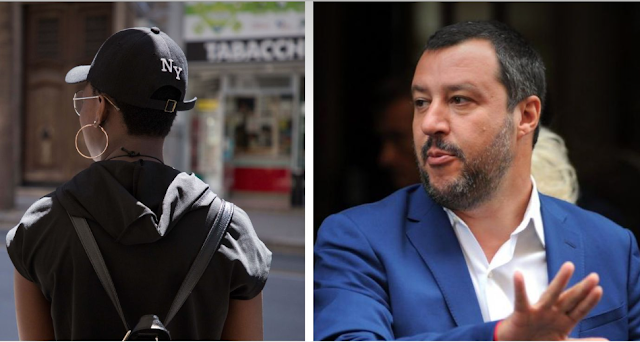Brief summary on the SALVINI'S DECREE so far....
Here is a summarized breakdown of the Salvini decree up to date....
On November 7, 2018: The Italian Senate approved the Salvini Decree, but it's not yet a law. The Chamber of Deputies, which is the lower house of Parliament, still has until December 3 to approve or reject the decree.
On October 5 2018: The Italian President; Sergio Mattarella approved the Salvini Decree and published it in the Italian government's official gazette. Parliament now has 60 days to approve or amend the decree. If Parliament approves, the decree will become law.
On September 25, 2018: The Italian government has approved the Salvini Decree and sent it to Italian President Sergio Mattarella for his review. The president must approve it before it can be examined by Parliament.
On September 6, 2018: Italian Minister of Interior Matteo Salvini introduced a draft decree that would make humanitarian protection — the type of protection that comes with a 2-year permesso di soggiorno — available to very few people.
For now, Italy is still granting humanitarian protection to people who qualify.
On July 24 2018: Salvini announced plans to end humanitarian protection. But since even before that, there has been lots of questions from people both on Facebook and WhatsApp about whether Italy would stop issuing humanitarian protection.
Here's what we know about the draft decree.
What's proposed in the draft decree?
According to press coverage, the draft decree proposes major changes related to migration, citizenship and international protection. Some of the most significant changes:
📍Granting humanitarian protection only to people with extreme medical conditions, victims of natural disasters, or those who have performed heroic acts.
📍Making many criminal sentences grounds for denying an asylum request or taking away someone's international protection, as well as deportation.
📍Taking away the Italian citizenship of anyone who is deemed a threat to security or has committed acts of terrorism.
📍Doubling how long people can be held in expulsion and repatriation centers, from 3 months to 6 months.
📍Increasing funding to construct more identification and repatriation centers throughout Italy.
📍Restricting who can stay in SPRAR centers. Only people with subsidiary protection or refugee status (5-year permessi di soggiorno) and unaccompanied minors will be allowed to stay in SPRAR centers.
When will the decree go into force?
In the Italian judicial system, the government creates a draft decree like this one in urgent cases.
In order for the draft decree to become official law, it needs to be reviewed by the Consiglio dei Ministri (the executive branch of the Italian government) and then proposed to Parliament.
So far, the draft decree has not yet been proposed to Parliament.
Once Salvini does propose the draft decree to Parliament, members will have 60 days to review it, make any changes, then vote on it, and convert it into law. If Parliament does not complete these steps in 60 days, the draft decree will be thrown out.
Since the new government came into power in May, no new laws have been enacted or proposed. But this new proposed decree reflects much of what Salvini proposed in his campaign platform.
We'll keep you updated as we get more information.
What's humanitarian protection?
Humanitarian protection is the most common kind of protection in Italy.
Italy grants humanitarian protection to people who don't meet the requirements for subsidiary protection or refugee status (which come with a 5-year permesso di soggiorno) but who still might not be safe in the country they come from.
It is for people fleeing humanitarian crisis brought on by conflict, natural disaster or other events. Sometimes, people with serious medical conditions get humanitarian protection as well.
If Italy grants you humanitarian protection, you get a 2-year permesso di soggiorno, called a permesso di soggiorno per motivi umanitari, that you can renew.

inhumane
ReplyDelete